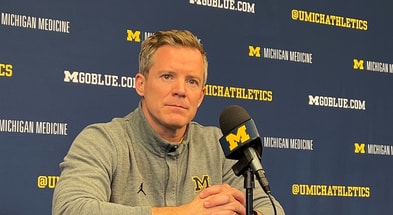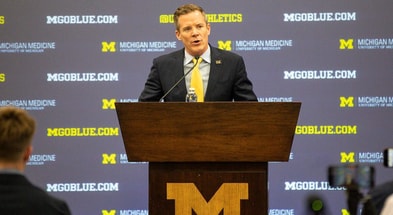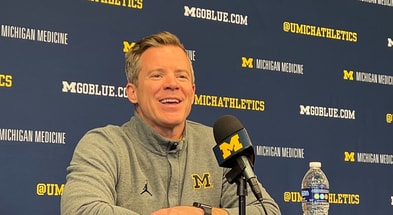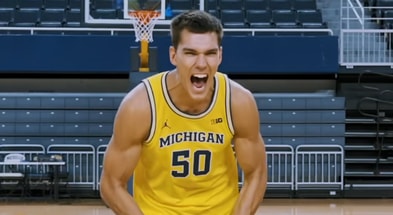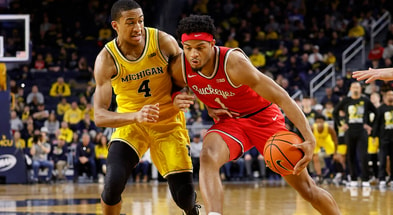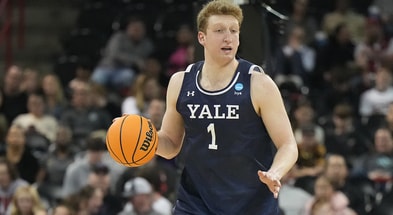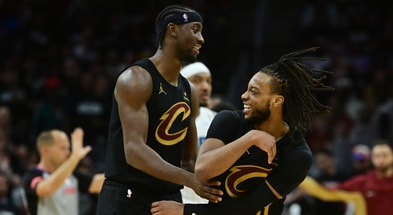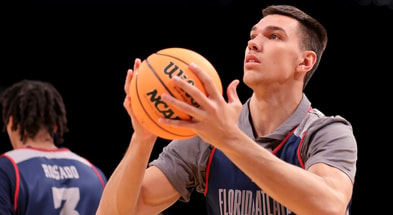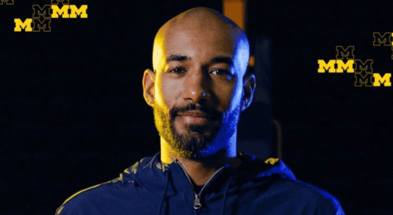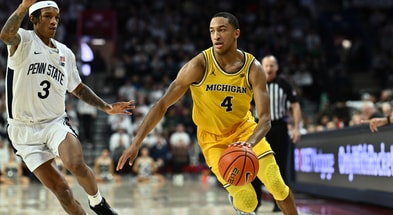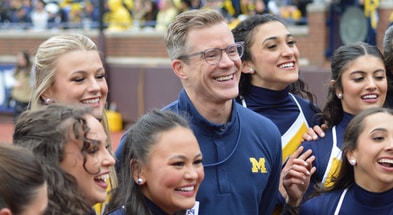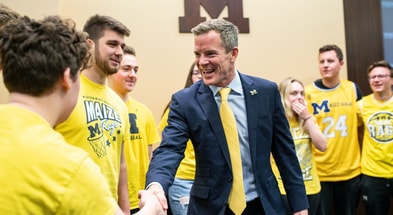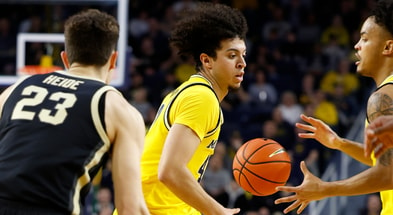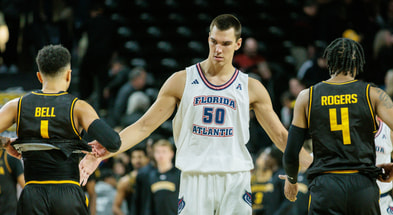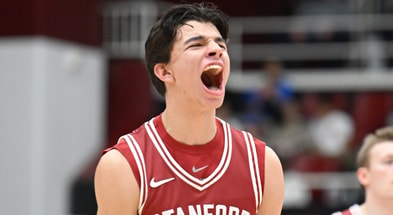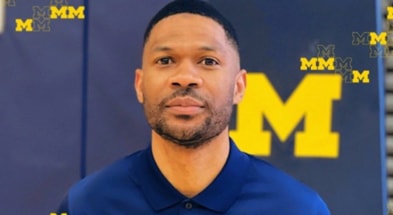Michigan basketball trying different frontcourt options: 'Thump and bump,' Will Tschetter
Michigan Wolverines basketball freshman forward Tarris Reed Jr. revealed just before the season that he hadn’t practiced any at the power forward spot, just center. That was the case in games, too, until Jan. 12 at Iowa.
Reed and junior center Hunter Dickinson took the floor together for the first time, and the combination was impressive. Reed played a career-high 21 minutes and was on the floor for six minutes down the stretch. He tallied 2 points and 7 rebounds, and played solid defense on Iowa junior forward Kris Murray, one of the Big Ten’s top players, on a number of possessions. The 6-10, 260-pounder posted a minus-2 plus/minus rating in a game Michigan lost by nine points, 93-84 in overtime.
“Thump and bump!” Michigan assistant Saddi Washington called the combination during his halftime radio interview. “Tarris has great feet from a defensive standpoint, so we can get away with it sometimes.”
‘Thump and bump,’ by the way, was coined by Charles Barkley and Rick Mahorn — a bruising duo inside — with the Philadelphia 76ers in the early 1990s.
RELATED
• Fab Five: Takeaways from Michigan’s overtime loss at Iowa
• Michigan basketball can’t afford any more squandered opportunities
Michigan got away with it quite a bit, especially in the first half. Reed is big enough to match up with Murray when he goes inside and actually contested some jumpers as well.
“He’s a great defender,” Dickinson said of Reed. “He’s very mobile so he makes up for a lot of mistakes that other players make,” Dickinson said of Reed. “He’s a great player with a lot of potential.”
Iowa head coach Fran McCaffery wasn’t expecting to see the look but was impressed at how effective it was.
“I’m a big Reed fan,” McCaffery said. “I think he’s tremendous. So, you look at them as, they’re both five men. But they both can score, and they both are athletes. They both have length. You can play them both together. And that’s probably something Juwan will do at times moving forward, depending on who they’re playing against.”
Dickinson hopes to unfurl the frontcourt duo going forward.
“It was really fun to go out there and play with him,” Dickinson, a 7-foot-1, 260-pounder, said. “That’s something that I would look forward to in the future if we’re able to do that in some more games.
“I thought he did a really good job of rebounding. We’re just going to try to build off that, learn from the negatives.”
Some of those negatives included some clunkiness. Reed failed to handle a couple passes, leading to turnovers. Dickinson had 4 total turnovers himself. Michigan also didn’t have as good of spacing with Reed on the floor. It wasn’t necessarily an issue against Iowa, but might be one once opponents have the benefit of seeing the look on film and preparing for it pregame.
Michigan forward Will Tschetter on the rise, too?
Michigan junior forward Terrance Williams II has struggled a bit offensively this year. He’s averaging 7.1 points per game but shooting only 37.6 percent from the field, including 30.4 percent from three-point range. That’s down from 45.5 percent and 38.5 percent last season, respectively.
Williams also appears to be dealing with a right wrist injury. He had a wrap on it and was fidgeting with it during the loss to Iowa.
Michigan sophomore forward Will Tschetter has earned more and more playing time at the power forward spot lately, most recently notching a career-high 12 minutes against the Hawkeyes.
Tschetter posted a career-best 7 points on 3-of-3 shooting from the field and 1-of-1 from long range. Per Synergy, Michigan’s four most efficient lineups offensively included Tschetter. He also made some great plays on the defensive end, communicating well and playing sound fundamentally.
